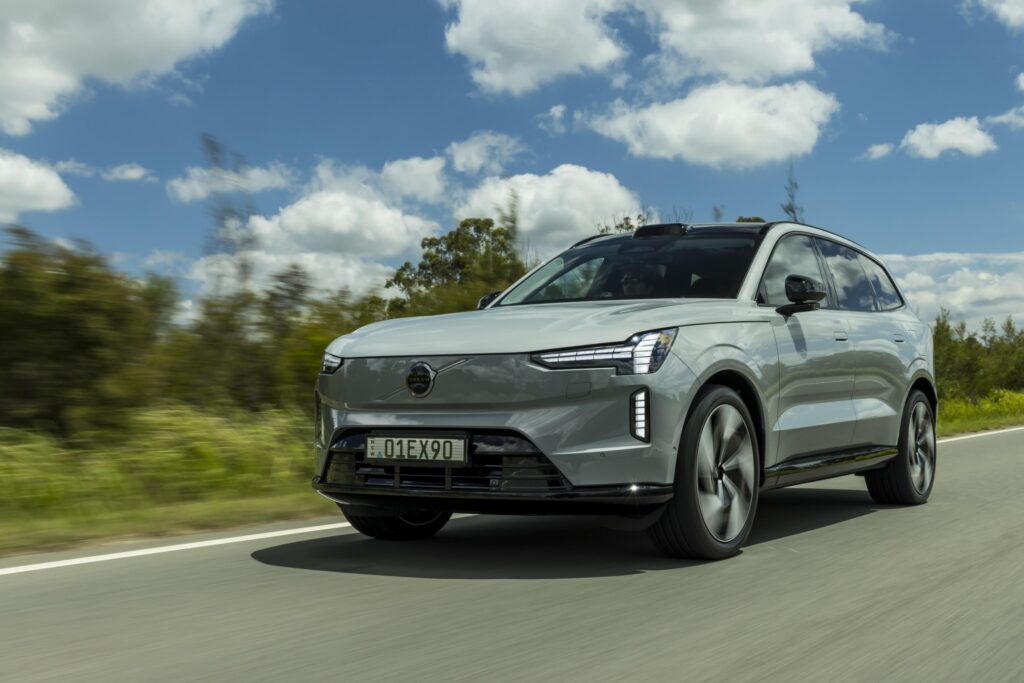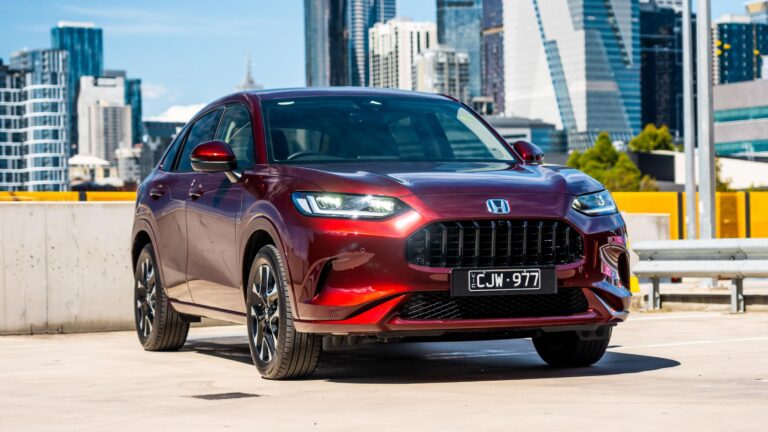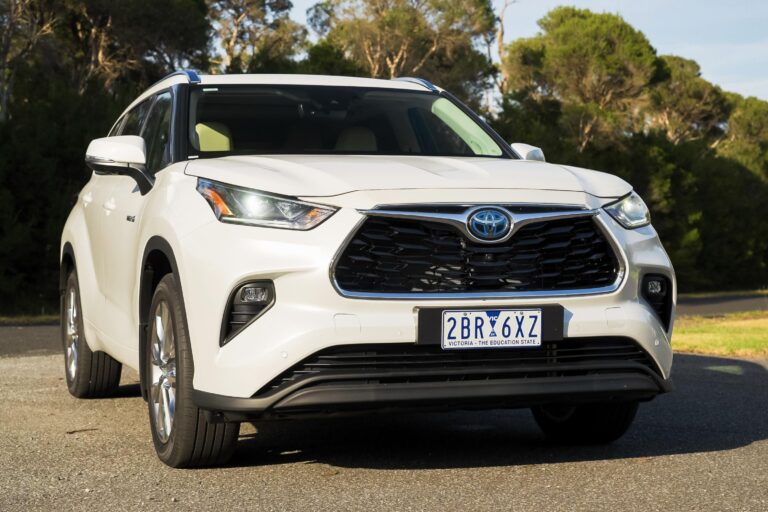2025 Volvo EX90: Owner review
The all-electric Volvo EX90 seven-seat SUV stays true to the brand’s hallmarks and should carve out a very niche part of the new car market.

Been waiting for an electric Volvo XC90? Meet the new 2025 Volvo EX90…
Yes, it’s known by a slightly different name, but the EX90 joins the Swedish brand’s EX-branded EV lineup alongside the smaller EX30 and EX40, and will soon be joined by the ES90 electric sedan.
The EX90 was part of Volvo’s ambitious plan to go fully electric by the end of the decade, and in Australia by 2026. Those goals have been softened somewhat, and the new EV products will be sold with the brand’s legacy nameplates, which in the case of the XC90 offer mild-hybrid and plug-in hybrid powertrains.
Volvo’s new flagship rides on the SPA2 platform that’s shared with the Polestar 3 and ES90. Essentially, it’s a software-driven, dedicated electric vehicle platform that builds on technologies from the first-generation Scalable Product Architecture (SPA) platform that still features in Volvo’s lineup in the current 60 Series and 90 Series ranges.
It features a large battery pack sourced from CATL, offers a slew of sensors and assistance systems in line with Volvo’s safety-first ethos, as well as the brand’s latest 5G-connected infotainment with Nvidia computing power.
How much does the Volvo EX90 cost?
The EX90 starts at $124,990 plus on-road costs for the Plus Twin Motor, with the Ultra Twin Motor Performance adding another $10,000.
| Model | Price before on-road costs |
|---|---|
| 2025 Volvo EX90 Plus Twin Motor | $124,990 |
| 2025 Volvo EX90 Ultra Twin Motor Performance | $134,990 |
While there’s a new one on the way, the existing XC90 T8 Plug-in Hybrid starts from $128,390 before on-roads, and that’s likely to increase with the incoming facelift due imminently.
However, Volvo’s popular seven-seat SUV starts as low as $99,940 for the entry-level mild-hybrid petrol version. So soon, Volvo will offer mild-hybrid, plug-in hybrid and battery electric seven-seat SUVs in Australia.
What is the Volvo EX90 like on the inside?
Volvo is well-known for its lounge-like cabins, and the EX90 brings that philosophy into a new age.
When I first got into the EX90, I noticed a number of similarities to the Polestar 3, from the steering wheel and driver’s instrument cluster to the floating center console and even the window switches.
However, Volvo has gone to great lengths to make the EX90’s interior look and feel like an evolution of the XC90, so as not to confuse potential customers with a completely different layout.
The thick upper dash and door trims offer a familiar shape and feel, as does the texture of the dashboard and the shape and feel of the comfortable chair-like seats. The quality and feel of the touch are also excellent, so if you’re worried about the EX90’s Chinese production compared to the XC90’s Swedish assembly, at least first impressions show that there’s no degradation in quality.
New for Volvo – and similar to the related Polestar – is a more pared-down approach to physical buttons and switches, in some cases to Volvo’s detriment.
For example, to adjust the side mirrors and steering wheel, you have to go through the touchscreen and then use the steering wheel buttons. To toggle the rear windows, you have to press a second button, as there’s only one physical switch on the front door.
The XC90’s removal of the drive mode select rocker is also annoying, as you now have to go through the display to change the suspension (where applicable) and drive mode settings, which is a bit confusing while driving.
In front of the driver is a slim 9.0-inch digital instrument binnacle that’s shared with several models in the Geely Auto Group, although the EX90’s is very similar in look and feel to the Polestar 3 and 4. It offers a simple and flat display of key information, and there are a few different views, including a Google Maps view.
I also like the labeling of the steering wheel buttons, which is a key difference despite the Polestar 3 having a nearly identical steering wheel. This helps with usability and increases accuracy when you’re driving.
The front seats are typical for Volvo, as they’re highly contoured and supportive, giving a feel more like a comfortable lounge chair than a car seat. Electric adjustment and heating are standard, though you can opt for ventilation and massage functions on the base Plus – or get them standard on the Ultra.
Move across the leather-wrapped and sustainably sourced wood dash and there’s a 14.5-inch touchscreen infotainment system front and center, which appears like a floating tablet.
Running the brand’s Google Built-in software interface and connected services, it offers native apps like Google Maps and Google Assistant, as well as access to the Google Play Store. Better yet, it gets wireless Apple CarPlay and Android Auto as standard – and in our brief time with the car, it worked flawlessly.
While some complex vehicle settings menus add an extra layer of toggling things I don’t want there, it’s not the most complex system, and there are some shortcuts to settings and functions if you need them.
The display offers nice clarity and resolution, is quick to respond to touch input, and has smooth loading animations. It includes Google Assistant, so you don’t have to manually press anything.
A powerful 14-speaker Bose Premium Sound System connected to a large iPad-like screen is included on the Plus, but if you want a proper high-quality experience, a 25-speaker, 1610-watt Bowers & Wilkins surround sound system is available, which is truly exceptional.
The EX90’s second and third rows are perhaps more important than the first row, given the family focus of this vehicle. There are seven seats as standard, although a luxurious four-seat Excellence variant is available abroad.
It’s not exactly regal, but the second-row seats are very good, even for taller adults like me. I’m 6’1″ tall, and because of the boxy shape, I had plenty of head and legroom, and the front seat backs have scalloped sections that are better suited to rear-seat passengers.
You can slide the second row forward and back to provide more space in the back, and each seat can also recline separately. There’s also an attached booster seat cushion in the center “for children over four years old.”
Four-zone climate control is standard with rear temperature and fan controls, and there are vents for airflow behind the center console and in the B-pillar. The EX90 offers two USB-C ports in the back for charging your devices, along with two ports up front.
Storage is fairly good, with a good cubby under the front center armrest, deep door pockets in both rows, space in front of the front center console, map pockets behind the front seats, and a fold-down center armrest with cupholders in the second row. Like the XC90, it’s designed for families first.
Although Volvo describes the EX90’s seven seats as “adult-sized seats,” you may want to consider that the third row is only used by adults under 180cm.
I tried to get into the back seats, and finding knee room in particular was a challenge. There was headroom for my tall frame, but you have to slide the second row forward quite a bit to make it work.
Volvo quotes a cargo capacity of 310 litres with all seven seats in use with the load cover, which increases to 655 litres when folded. With the second and third rows folded you have 1915 litres of space.
There’s another 65 liters under the boot floor, which acts as a good place to store your charging cables, but instead of a spare wheel there’s only a tire mobility kit – something to keep in mind if you’re often out of town.
| Dimensions | Volvo EX90 |
|---|---|
| Length | 5037mm |
| Width | 1964mm 2113mm incl. mirrors |
| Height | 1744mm |
| Wheelbase | 2985mm |
| Cargo capacity | 310L – 7 seats to load cover 655L – 5 seats to load cover 1915L – 2 seats 65L – under load floor 34L – under bonnet |
What’s under the bonnet?
No combustion engine, but rather a small ‘frunk’ with 34 litres of storage between dividers. The EX90 is available with a pair of dual-motor electric drivetrains in Australia, both fed by a large 111kWh battery.
| Specifications | EX90 Twin Motor | EX90 Twin Motor Performance |
|---|---|---|
| Drivetrain | Dual-motor electric | Dual-motor electric |
| Battery | 111kWh – gross Li-ion NMC | 111kWh – gross Li-ion NMC |
| Power | 300kW | 380kW |
| Torque | 770Nm | 910Nm |
| Drive type | All-wheel drive | All-wheel drive |
| Weight | 2807kg | 2815kg |
| 0-100km/h (claimed) | 5.9 seconds | 4.9 seconds |
| Top speed | 180km/h | 180km/h |
| Energy consumption (claimed) | 22kWh/100km | 22kWh/100km |
| Claimed range | Up to 570km – WLTP | Up to 570km – WLTP |
| Max AC charge rate | 11kW | 11kW |
| Max DC charge rate | 250kW | 250kW |
In the EX90 Plus Twin Motor, we were seeing energy consumption closer to the 20-22kWh/100km mark, whereas in the more powerful Ultra Twin Motor Performance that figure was sitting more at the 24kWh/100km with a heavier foot.
How does the Volvo EX90 drive?
Volvo has made it very clear that they’re not trying to make their cars overly sporty like some of their premium rivals, but rather focus more on comfort and refinement – and in my opinion, that’s for the better.
Even the ‘base’ EX90 Plus Twin Motor offers plenty of power – producing 300kW and 770Nm of torque from its dual-motor electric drivetrain – but while it’s capable of hot hatch-beating acceleration, it’s also extremely comfortable and quiet while driving.
Our drive route was from Adelaide Airport to Kington Homestead in the Barossa Valley. The journey took us through city streets and suburbs, then out of town on freeways and then high-speed country B-roads.
Most of our time was spent with the EX90 Plus, which runs passive damping with a standard steel-sprung suspension setup. Riding on standard 20-inch alloy wheels and chunky 255/50 Michelin Pilot Sport EV tires, the standard car strikes a great balance between performance, comfort, and handling.
Over bumps and big bumps, the EX90 is impressively compliant even on the non-adaptive chassis, although we found the initial impact of pocketmarked sections of road to be a bit busy and jarring.
Insulation from road and wind noise is excellent, especially since there’s no powertrain noise. Volvo quotes a drag coefficient of 0.29Cd for the EX90, and the sharply sloping windshield and slim mirrors no doubt help the cause.
The steering is quick if a bit light and vague-feeling, making the EX90 surprisingly drivable for such a large car. Keep in mind this big electric family car is over five meters long and almost two meters wide.
It turns in nicely and offers good grip for such a big and heavy car – it weighs 2.8 tonnes – even with good grip from Michelin rubber on the more comfort-focused wheel and tyre package.
The EX90 is nicely placed and secure at high speeds, and the steering isn’t vaguely on-centre in the ‘firm’ setting. However, switch it to ‘soft’, and there’s a slight vagueness initially.
Volvo’s claim of a 0-100km/h time of 5.9 seconds feels entirely believable by the seat of its pants, with the EX90 consistently accelerating at full throttle. It doesn’t hit your neck or make you sick, but gains ground quickly for a big car.
On the way back to Adelaide from the Barossa Valley we spent a short time behind the wheel of the EX90 Ultra Twin Motor Performance, which is equipped with large 22-inch alloys and adaptive air suspension.
The Performance Tune adds another 80kW and 140Nm to the mix, shaving 1.0sec from the 0-100km/h time. It certainly feels livelier, although with the air suspension set to ‘soft’ it adds a bit of extra float and softness compared to the passively damped setup.
With those big 22-inch rims and 265/40 section low-profile rubber, there’s still an initial harshness over small but sharp bumps, as we experienced on the base model. However, we were surprised to see no significant difference in road noise due to the bigger wheels.
Since the Ultra basically just adds air suspension, Bowers & Wilkins surround sound and ventilated seats, I’d say you’d be better off opting for the Plus option with the above features and getting the smaller wheels with air springs – unless you want to get the HD Pixel LED headlights.
Finally, the driver assistance systems are some of the most sophisticated I’ve experienced on this platform and use Geely’s suite of technologies.
We didn’t experience any bugs or dropouts in the lane-sensing system or driver attention monitor, which have been the subject of much more annoying beeps and bongs in recent experiences with Polestar and Zeekr products.
The EX90 simply nudges you back into your lane with the lane-keep assist function and doesn’t take the steering out of your hands.
Pilot Assist did a great job on Adelaide’s freeways, keeping us centered in our lane and maintaining a safe distance from the car in front – although you can’t adjust the set distance. The EX90 can help you change lanes in this mode, if you want.
2025 Volvo EX90 Plus equipment highlights:
- 7 seats
- 20-inch alloy wheels – 5-spoke Aero
- LED headlights
- LED daytime running lights
- LED tail-lights
- 9.0-inch digital instrument cluster
- 14.5-inch infotainment touchscreen
- DAB+ radio
- Google built-in
- Google Maps
- Google Assistant
- Google Play store
- 5G connected services
- Over the air updates (OTA)
- Volvo Cars App remote functions
- Wireless Apple CarPlay and Android Auto
- 14-speaker Bose sound system
- 4-zone climate control
- Nordico upholstery
- Heated front, rear seats
- Heated steering wheel
- Power driver seat incl. memory
- Power passenger seat
- Textile cabin floor mats
- Air purifier, remote cabin pre-cleaning
- Panoramic glass roof – fixed
- Power tailgate
- Smartphone key
EX90 Ultra adds:
- 22-inch alloy wheels – 5-spoke Aero
- HD Pixel LED headlights
- Adaptive air suspension
- Adaptive chassis
- 25-speaker Bowers & Wilkins surround sound
- Front seats – ventilated and massaging
- Laminated side and rear windows
- Rear privacy glass
Is the Volvo EX90 safe?
Standard safety equipment includes:
- Autonomous emergency braking (AEB)
- incl. pedestrian, cyclist, animal detection
- Blind-spot monitoring
- Door opening alert
- Intersection autobrake – AEB Junction
- Lane departure warning
- Lane-keep assist
- Pedestrian, cyclist steering avoidance
- Pilot Assist
- Adaptive cruise control
- Lane centring assist
- Rear cross-traffic assist
- Road sign information
- Run-off road mitigation
- Surround-view cameras
In addition to the above driver assistance systems and technologies, the EX90 offers a suite of external radar sensors and a front-facing Lidar sensor, allowing better detection of other vehicles and road users.
Further, there’s interior cameras for occupant sensing as well as capacitive sensors in the steering wheel to ensure occupants aren’t left behind and that the driver remains in control of the vehicle.
How much does the Volvo EX90 cost to run?
| Servicing and Warranty | Volvo EX90 |
|---|---|
| Warranty | 5 years, unlimited kilometres – vehicle 8 years – EV battery |
| Roadside assistance | 5 years |
| Service intervals | – |
| Capped-price servicing | 5 years or 150,000 kilometres |
| Total capped-price service cost | $0 |
Unlike some other premium brands, Volvo doesn’t offer a subscription to public charging networks like Chargefox.






